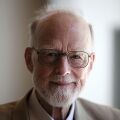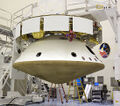Template:Selected anniversaries/January 11: Difference between revisions
No edit summary |
No edit summary |
||
| Line 12: | Line 12: | ||
File:Niels Steensen.png|link=Niels Steensen (nonfiction)|1638: Scientist and bishop [[Niels Steensen (nonfiction)|Niels Steensen]] born. He will question explanations for tear production, the idea that fossils grow in the ground. | File:Niels Steensen.png|link=Niels Steensen (nonfiction)|1638: Scientist and bishop [[Niels Steensen (nonfiction)|Niels Steensen]] born. He will question explanations for tear production, the idea that fossils grow in the ground. | ||
||1707: Vincenzo Riccati born ... mathematician and physicist. He was the brother of Giordano Riccati, and the second son of Jacopo Riccati. Riccati's main research continued the work of his father in mathematical analysis, especially in the fields of the differential equations and physics. | ||1707: Vincenzo Riccati born ... mathematician and physicist. He was the brother of Giordano Riccati, and the second son of Jacopo Riccati. Riccati's main research continued the work of his father in mathematical analysis, especially in the fields of the differential equations and physics. Pic. | ||
File:Bartolomeu Lourenço de Gusmão.jpg|link=Bartolomeu de Gusmão (nonfiction)|1711: Inventor and priest [[Bartolomeu de Gusmão (nonfiction)|Bartolomeu de Gusmão]] collaborates with [[Didacus automaton (nonfiction)|Didacus automaton]] on design of new [[Airship (nonfiction)|airship]]. | File:Bartolomeu Lourenço de Gusmão.jpg|link=Bartolomeu de Gusmão (nonfiction)|1711: Inventor and priest [[Bartolomeu de Gusmão (nonfiction)|Bartolomeu de Gusmão]] collaborates with [[Didacus automaton (nonfiction)|Didacus automaton]] on design of new [[Airship (nonfiction)|airship]]. | ||
| Line 61: | Line 61: | ||
||1962: Cold War: While tied to its pier in Polyarny, the Soviet submarine B-37 is destroyed when fire breaks out in its torpedo compartment. | ||1962: Cold War: While tied to its pier in Polyarny, the Soviet submarine B-37 is destroyed when fire breaks out in its torpedo compartment. | ||
||1980: Erwin Otto Marx dies ... electrical engineer who invented the Marx generator, a device for producing high voltage electrical pulses. He worked on electrical power distribution via long distances. Pic search good: https://www.google.com/search?q=Erwin+Otto+Marx | |||
||1996: Space Shuttle program: STS-72 launches from the Kennedy Space Center marking the start of the 74th Space Shuttle mission and the 10th flight of Endeavour. | ||1996: Space Shuttle program: STS-72 launches from the Kennedy Space Center marking the start of the 74th Space Shuttle mission and the 10th flight of Endeavour. | ||
Revision as of 15:28, 7 March 2019
1502: Mathematician, cosmographer, and academic Pedro Nunes born. He will be one of the greatest mathematicians of his time, known for his mathematical approach to navigation and cartography.
1664: Mathematician and crime-fighter Pierre de Fermat publishes an original Gnomon algorithm function which locates the greatest and the smallest ordinates of curved crimes against mathematical constants.
1569: First recorded lottery in England.
1570: Didacus automaton uses Gnomon algorithm to predict winning lottery numbers.
1638: Scientist and bishop Niels Steensen born. He will question explanations for tear production, the idea that fossils grow in the ground.
1711: Inventor and priest Bartolomeu de Gusmão collaborates with Didacus automaton on design of new airship.
1757: engineer and naval architect Samuel Bentham born. He will design the first Panopticon.
1934: Computer scientist Tony Hoare born. He will go on to invent the quicksort algorithm, and make other contributions to computer science.
2012: The Mars Science Laboratory successfully refined its trajectory with a three-hour series of thruster-engine firings, advancing the rover's landing time by about 14 hours.
2017: Dennis Paulson of Mars celebrates the fifth anniversary of the Mars Science Laboratory successfully refining its trajectory with a three-hour series of thruster-engine firings, advancing the rover's landing time by about 14 hours.









